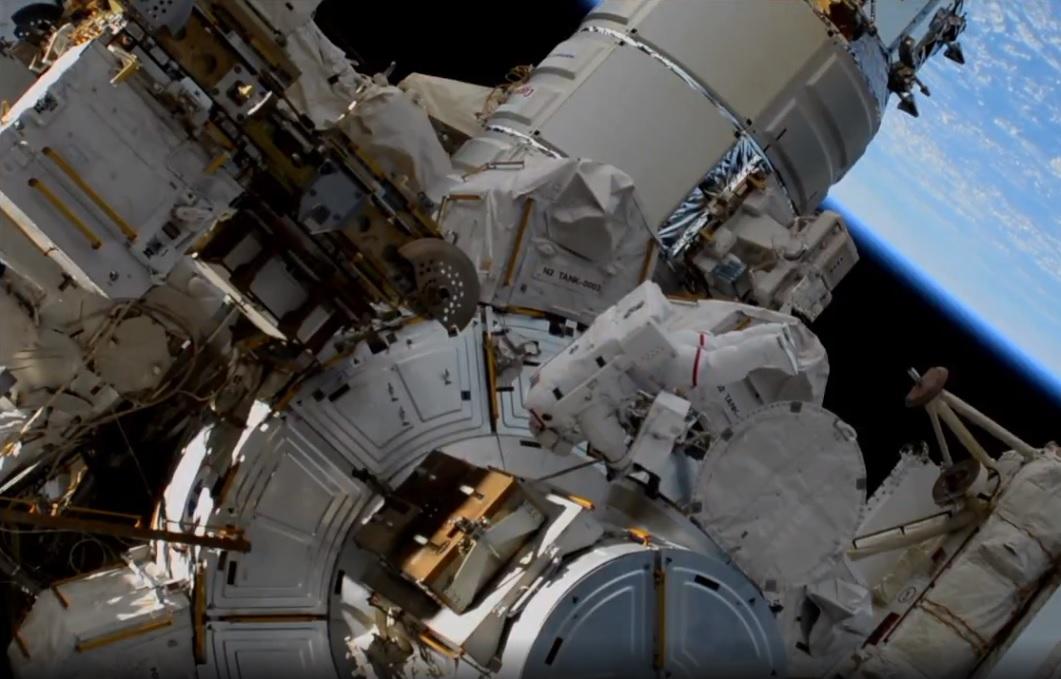
HOUSTON - NASA astronauts Jessica Meir and Christina Koch on Jan. 20 completed the latest spacewalk in the long-running effort to upgrade the International Space Station's solar power generation system by replacing aging nickel hydrogen (NH) batteries with more efficient lithium-ion (Li) batteries.
Meir and Koch installed the last of six Li batteries that replaced 12 of the less-efficient NH versions. They also relocated two NH batteries along with adapter plates to complete connections on the 4B power channel located on the far port side of the orbiting science lab's 356-ft.-long solar power truss.
The battery exchange, which began with spacewalks on Oct. 6 and 11, was interrupted by a faulty battery charge/discharge unit (BC/DU) after the second spacewalk. Meir and Koch joined for what was the first spacewalk ever by two women on Oct. 18 to replace the BC/DU. They teamed again with a Jan. 15 spacewalk to resume the battery swap out and for a third time on Jan. 20, completing the task at 1:33 p.m. EST.
The new, smaller and lighter LI batteries for the 2B and 4B channels arrived on the Japan Aerospace Exploration Agency's (JAXA) eighth H-2 Transfer Vehicle (HTV) resupply mission on Sept. 28, 2019, to initiate the third round of four planned exchanges of six Li batteries for 12 NH batteries to ensure the six-to-seven person ISS's life support, communications, attitude control, research endeavors and other critical systems are sufficiently powered across eight solar power channels as the ISS enters darkness for half of every 90-min. orbit around the Earth.
A fourth and final set of six new Li batteries is to be launched aboard a JAXA resupply mission later this year for installation with spacewalks on the far starboard side of the long solar power truss. The old NH batteries are to be placed aboard the JAXA cargo freighters for disposal as the capsules depart the ISS for destructive re-entries into the Earth's atmosphere.
The first and second round of exchanges were carried out at inboard power channels on the starboard and port solar power truss in January 2017 (starboard inboard) and March 2019 (port inboard).
The October spacewalk interruption also prompted a delay in a spacewalk by NASA's Drew Morgan and European Space Agency astronaut Luca Parmitano to complete the installation of a new thermal control system on the $2 billion Alpha Magnetic Spectrometer, the nearly 9-year-old cosmic ray observatory.
Morgan and Parmitano are scheduled to complete the task on Jan. 25 by checking for leaks as a new Upgraded Tracker Thermal Pump System, an assembly of four liquid carbon dioxide circulation pumps, and eight carefully spliced coolant tubes are activated. They will also install thermal protection blankets to close out the work they began with spacewalks on Nov. 15 and 22 and Dec. 2.





